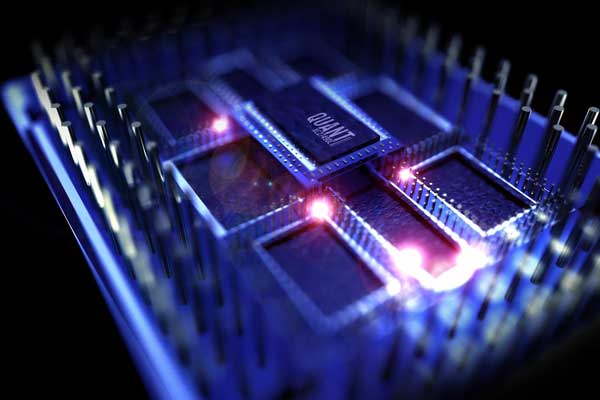For most of our history, human technology consisted of our brains, fire, and sharp sticks. While fire and sharp sticks have evolved into power plants and nuclear weapons, the most significant upgrade has happened to our brains. Since the 1960s, the power of our brain machines has grown exponentially, leading to the development of smaller and more powerful computers. However, this progress is approaching a physical barrier. In this article, we will delve into the world of quantum computers, their immense potential, and how they are pushing the limits of human technology.

The Basics of Computer Technology
In order to understand the challenges faced by conventional computers and the emergence of quantum computing, it is crucial to grasp the basics of computer technology. A computer is composed of simple components that process data and control mechanisms. At the core of computer chips are logic gates, which contain transistors. Transistors act as data processors, functioning as switches that either allow or block the flow of information. Data is represented by bits, which can be set to 0 or 1. Combinations of bits are used to represent more complex information, and logic gates perform basic operations like AND or OR.
The Quantum Challenge
As computer parts continue to shrink, quantum physics introduces new challenges. Transistors are reaching sizes comparable to just a few atoms. At this scale, electrons may tunnel through blocked passages due to quantum tunneling. The predictable behavior of traditional computers breaks down in the quantum realm, necessitating a different approach.
Introducing Quantum Computers
To overcome the limitations of traditional computers, scientists are exploring the potential of quantum computers. Unlike classical computers that use bits as the smallest unit of information, quantum computers employ qubits. A qubit can exist in multiple states simultaneously due to a property called superposition. This means that a qubit can be in any combination of 0 and 1 at the same time. However, upon measurement, the qubit collapses into a definite state.
Harnessing the Power of Superposition and Entanglement
Superposition and entanglement are two fascinating properties of quantum computers. Superposition allows multiple qubits to represent a vast number of configurations simultaneously. With each additional qubit, the number of configurations grows exponentially. Entanglement establishes a close connection between qubits, enabling instantaneous reaction to changes in the state of one qubit, regardless of the distance between them. These properties pave the way for quantum computations that outperform classical computers.
Quantum Computers in Action
Quantum computers hold immense potential in various fields. Database searching, for example, can be significantly accelerated by quantum algorithms. While a classical computer would need to test every entry in a database, quantum computers can achieve the same result in a fraction of the time. IT security, which relies on encryption systems, faces a major threat from quantum computers. The exponential speed-up of quantum computations could potentially break current encryption methods. Furthermore, quantum simulations offer a promising avenue for studying complex systems, such as molecules, with greater accuracy.
Conclusion
In conclusion, quantum computers represent a paradigm shift in computing technology. As traditional computers reach their physical limits, quantum computers harness the unique properties of quantum physics to overcome those constraints. They offer exponential computational power through superposition and entanglement, enabling groundbreaking advancements in various fields, including database searching, IT security, and simulations. While quantum computers may not replace home computers entirely, their superiority in specific domains is undeniable. The future holds endless possibilities as we continue to explore and push the boundaries of human technology.
